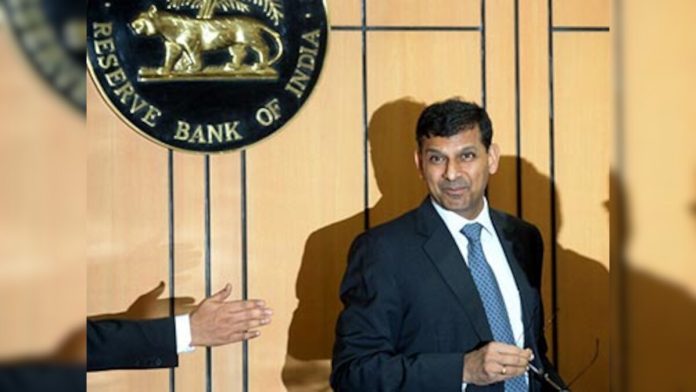The Indian Rupee’s depreciation has been a topic of concern among policymakers, economists, and investors alike. In her recent address to the Lok Sabha, Finance Minister Nirmala Sitharaman cited former Reserve Bank of India (RBI) Governor Raghuram Rajan to explain the reasons behind the rupee’s fall. With the backdrop of Budget 2025, she outlined key economic measures aimed at stabilizing the economy while acknowledging global currency volatility as a significant factor affecting the Indian rupee.
In This Article:
Why Is the Rupee Falling? The Global Perspective
The rupee’s depreciation is not an isolated phenomenon. Currencies worldwide have been experiencing fluctuations due to macroeconomic factors, particularly the strengthening of the U.S. dollar. According to FM Sitharaman, the dollar index has surged by 6.5% from October 2024 to January 2025, causing a ripple effect across major currencies, including the Indian rupee.
Raghuram Rajan, in a recent interview, echoed this sentiment, stating that the fixation with the rupee-dollar exchange rate often overlooks the broader trend of dollar appreciation. The depreciation of the rupee is moderate compared to several other global currencies, and its real effective exchange rate suggests a less drastic decline than perceived.
Budget 2025: Measures to Strengthen the Economy
Finance Minister Sitharaman highlighted that Budget 2025 is structured around key economic priorities, including:
- Accelerating Growth: Focused measures to boost GDP growth through infrastructure development, digital transformation, and industrial expansion.
- Invigorating Private Investment: Policies to encourage domestic and foreign investments in various sectors, fostering job creation and economic resilience.
- Supporting MSMEs: Micro, Small, and Medium Enterprises (MSMEs) are the backbone of the Indian economy, and Budget 2025 includes provisions to provide financial support, ease regulatory hurdles, and promote innovation.
- Employment-led Development: Job creation remains a central focus, with investments in skill development programs, labor-intensive industries, and public infrastructure projects.
Debt Consolidation and Fiscal Responsibility
A crucial aspect of the budget is debt consolidation. Sitharaman emphasized that the government has been actively working towards reducing public debt since 2021. The goal is to ensure that public funds are allocated towards productive asset-building activities rather than increasing fiscal deficits. States are also encouraged to adopt similar fiscal responsibility measures, with the central government offering support for capital expenditure projects.
Inflation Management: A Top Priority
Inflation control remains a key concern, and the government is taking proactive steps to keep inflation within the Reserve Bank of India’s (RBI) tolerance band of 2-6%.
Food inflation, impacted by adverse weather conditions and supply chain disruptions, has been a major challenge. However, Sitharaman assured that appropriate measures are being taken to stabilize prices and maintain food security. The government continues to implement policies to curb inflationary pressures and ensure stable economic growth.
The Impact on Indian Markets and Investors
The rupee’s decline has implications for Indian markets, particularly in areas such as:
- Import Costs: A weaker rupee increases the cost of imports, particularly crude oil, electronics, and essential raw materials. This can contribute to inflationary pressures in the domestic market.
- Foreign Investment: Currency volatility often impacts foreign investor confidence. However, India’s robust economic policies and investment-friendly measures are expected to sustain long-term investor interest.
- Export Competitiveness: A depreciating rupee makes Indian goods and services more competitive in the global market, potentially boosting exports in sectors like IT, textiles, and pharmaceuticals.
Comparing the Rupee with Other Global Currencies
While the rupee has seen depreciation, it is important to contextualize its performance relative to other global currencies. According to Rajan, the real effective exchange rate suggests that the rupee’s fall is not as severe when compared to other emerging market currencies. This means that while short-term volatility exists, India’s economic fundamentals remain strong.
Key Takeaways for Businesses and Individuals
For businesses, especially those involved in international trade, currency fluctuations present both challenges and opportunities. Companies dependent on imports may face higher costs, while exporters can benefit from increased global demand due to a weaker rupee.
For individuals, particularly those planning to travel abroad or studying overseas, a depreciating rupee means higher expenses. On the other hand, Non-Resident Indians (NRIs) sending remittances to India may find their money converting into a higher value in rupees.
A Balanced Approach to Economic Stability
The rupee’s depreciation is a complex issue influenced by global economic trends and domestic policies. While short-term fluctuations may cause concern, the government’s focus on economic growth, debt consolidation, and inflation management ensures that India remains on a stable economic path.
Budget 2025 reflects a forward-thinking approach, addressing key concerns while setting the stage for sustainable development. As global markets evolve, India’s resilience and proactive economic strategies will be crucial in maintaining financial stability and growth.
With a strategic mix of fiscal responsibility, investment promotion, and inflation control, the government aims to navigate the economic challenges ahead, ensuring a robust and thriving Indian economy.
By – Jyothi




